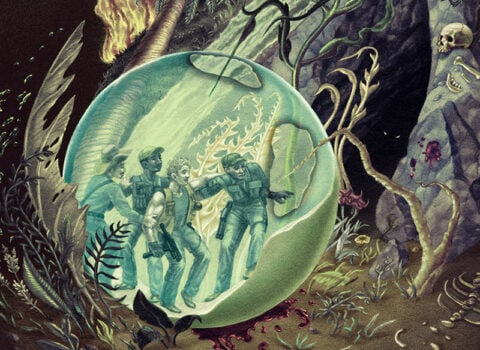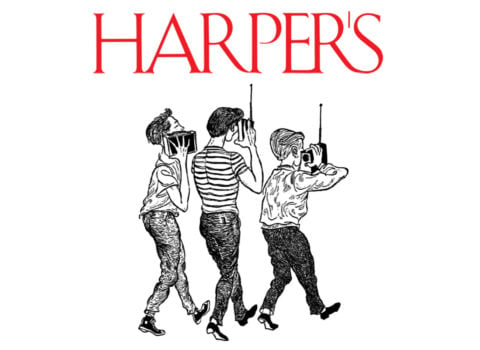Most films are instantly forgotten. I don’t mean this in the gently figurative sense—that most films are not remembered. I mean that most films, in their onrush of vague and barely chosen or badly chosen pictures trying to tell a story, are forgotten frame by frame as we watch them. Like so much of what we see through our inner cameras—tree #241 of the day; red light, green light; mustache, mustache—the brain edits ceaselessly and discriminatingly, ridding the inner tape of any particular trace of most of these repetitions. And when the repetitions come in film—car chase; love scene; mustache—the only means by which the flailing filmmaker can manage to make an impression is through enlargement: bigger car chase, bigger (or longer, or uncut) love scene; and of course, bigger mustache.
The other night I saw the newish film Synecdoche, New York. It was instantly memorable, more so than any other movie I’ve seen of late. This is saying something different from “it was worth remembering.” The organizing intelligence behind the writing and filming, Charlie Kaufman, is conspicuous and real. That isn’t surprising, considering the fineness of some of the films to which he has contributed. Eternal Sunshine of the Spotless Mind and Adaptation were both scrupulously and vividly coherent, meaning they were held together by a great attentiveness to metaphor—a literalizing of metaphor. We all sometimes want to forget the painful parts of our pasts, feel they can stand in the way of our presents, thus Kaufman created a story in which one literally does that–forgets, so that one can continue living (and, in Eternal Sunshine, loving). The creative process can present, to the inner “I” that does the work (as opposed the the bag of bones that grumbles at breakfast) the sense of such otherness as to seem like another, separate self entirely, and thus in Adaptation that figuration becomes a second figure, a literalization of that condition.
If those two films took on, in turn, the difficulty of loving and of making, the new one folds those two concerns into the larger trouble of living. Which is to say of dying. The film is more memorable than watchable. There is much for the mind to do after the movie but less for the heart to do while there. The beautiful parallels between the two creative products of the two artists at the center of the film–a painter who works very small, and a theater director who, in the hope of finally realizing his ambitions, decides to work big, enormously so–are a huge pleasure to have in one’s head after the fact.
While watching, though, I felt, and am left feeling, a grimness, not over the foreclosed natures of the people on screen, but over the aridity of the emotional climate that Kaufman otherwise imposes on an idea of being. The human here seems strangled by the uniting metaphor—that we each live in a world of our own devising that is unvisitable, uninhabitable, by others, all of whom become, in our little dioramas, projections of our wants.





